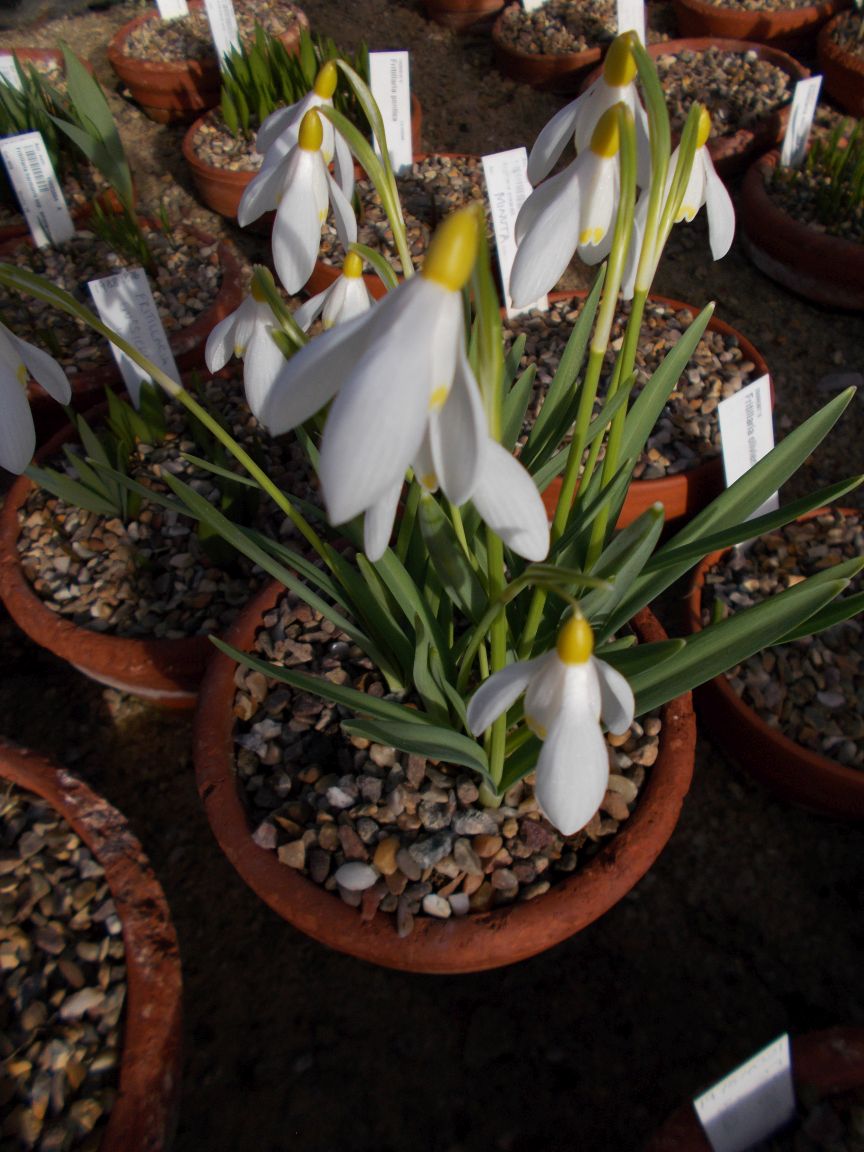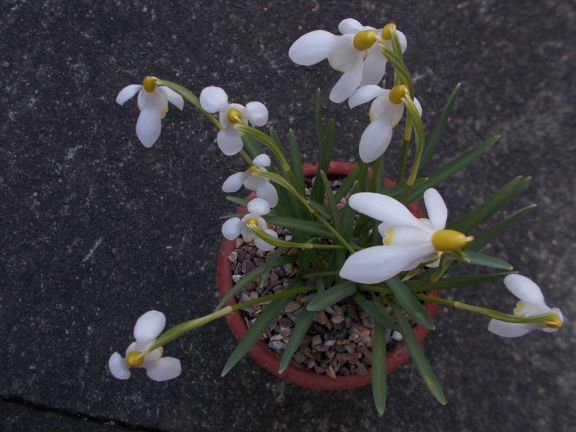A lot of plants have caught my eye during the past decade while compiling a weekly profile on a seasonal plant of interest. Below are the consistently reliable ones. These are the plants that whatever the seasonal weather, will flower, produce fruit or give exceptional foliage interest. These are the ten to fill your garden with and appreciate for their resilience and growth.
January: Vinca difformis – Myriad white flowers covering a tight tangle of evergreen shoots
February: Galanthus spp. and cultivars, carpets of Snowdrops through borders and woodland.
An image is attached of G. nivalis ‘Sandersii’ growing in the frames within the alpine yard. The Sandersii group of Snowdrops are known for their yellow ovary and yellow tips to the inner tepals. This collection of bulbs is particularly fine, the colouration resembling free range egg yolk.
March: Iris histrioides – Plant tightly and appreciate the vivid blue of these flowers
April: Magnolia campbellii and the cultivar ‘Charles Raffill’ – Superb trees covered in impressive pink blooms
May: Syringa x persica – Scent and compact form make this a choice specimen
June: The deciduous Azaleas – Select a cultivar that suits your colour scheme
July: Lilium formosana var. pricei – compact, impressive flower trumpet and a heady fragrance
August: Desfontainia spinosa – A Chilean native with hanging tubular red and yellow flowers
September: Anemone x hybrid – A classic cottage garden favorite
October: Cimicifuga simplex- Long musty scented spikes of starry shaped white flowers
November: Ginkgo biloba – Golden yellow foliage covers the tree, dropping as a golden carpet
December: Helleborus foetidus – An evergreen perennial providing flower on the shortest day.
So to planting, there is always room in the garden for new planting. We are now at the start of a fresh growing season. The garden centres are filling with a wide array of plants in prime condition. Better still, visit a nursery and talk to the growers, don’t be tempted by short term planting it is too early in the season for that. Look at woody material; shrubs and trees. Make a wise selection and think of the decades of pleasure a £30 – £40 investment will give both you and your neighborhood. Don’t balk at the price, use your wealth to support our industry, this is an investment in your garden, our environment.
Prepare the soil well, incorporate organic matter and remove any large stones. For container grown plants, remove the pot and roughen up the edges and base of the compost root ball. This helps the new roots grow out into the border soil. Set the plant in the planting hole so that the top of the compost root ball is lightly covered with soil when you back fill. Firm and grade the soil in the border to a finished level.
Water gently, flicking some water over the shoots, leaves and stems to freshen up the plant. After all, it has been on a journey.
In the first year water all new plantings during dry spells and keep competing vegetation clear from the base of and around the plant.


